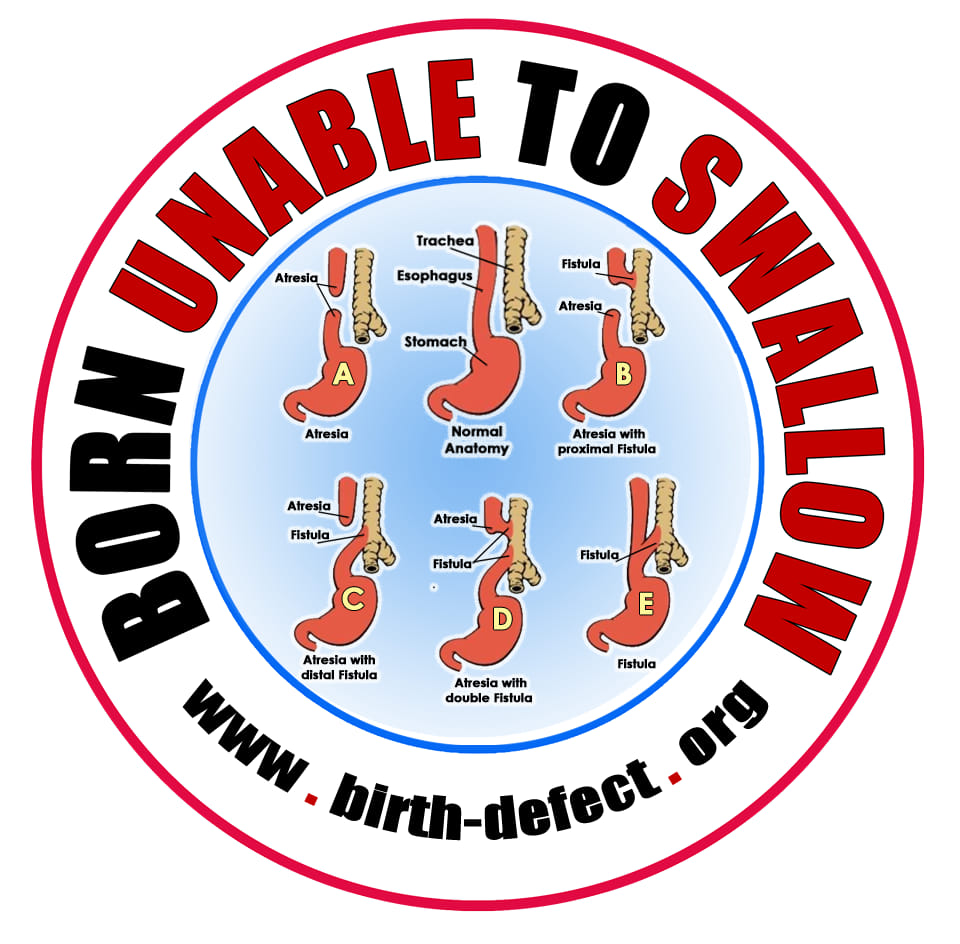Gross type E
TEF without esophageal atresia or so-called H-type fistula, H-Type TEF, where there is a TEF connecting between the esophagus and the trachea, but there is no EA. So this means that Children with an H-Type TEF, unlike the other types, are often diagnosed later in infancy or childhood. People with an H-type TEF can swallow, but often cough and choke during swallowing, especially with liquids, and may present with recurrent pneumonia. The exact prevalence of this form is not known (because they tend to be diagnosed late, but rarely as adults)
(this is known as Gross type E)
Gross tipo E.
La Fistula Traqueoesofágica sin atresia, o fistula tipo H, FTE Tipo H, es aquélla donde hay una FTE conectando entre el esófago y la tráquea, pero no hay AE. Esto significa que los niños con FTE Tipo H, a diferencia de los otros tipos, son diagnosticados tardíamente en su infancia o niñez. La gente con FTE Tipo H pueden toser frecuentemente y atragantarse mientras tragan, especialmente con líquidos. Además pueden presentar neumonías recurrentes. La prevalencia exacta de este tipo no es conocida (debido a que ellos tienden a ser diagnosticados tardiamente, pero raramente en la edad adulta.)
Typ E,
Przetoka bez atrezji przełyku lub tak zwanej przetoki typu H, gdzie istnieje przetoka łącząca przełyk z tchawicą, ale nie ma atrezji. Oznacza to, że dzieci z przetoką typu H, w przeciwieństwie do innych typów, często diagnozuje się później w wieku niemowlęcym lub dzieciństwie. Osoby z przetoką typu H mogą połykać, ale często kaszlą i duszą się podczas połykania, szczególnie płynów i może u nich występować nawracające zapalenie płuc. Dokładna częstość występowania tej postaci nie jest znana (ponieważ zwykle diagnozuje się ją późno, ale rzadko u dorosłych)
Stent to me by DR. Steven Rothenberg MD
Here is the video Link for H type TEF. Click on this link below
Real-life Surgeons at work Real Video.
https://www.dropbox.com/s/f38jdzsfz97qeeb/H%20type%20TEF%20IPEG%20Video.mov?dl=0&fbclid=IwAR1k4D0pgZt3sh7Zod_09R586mMas5jkMbSdwzuqo3qa1tcIwsZfh0cTpBA








